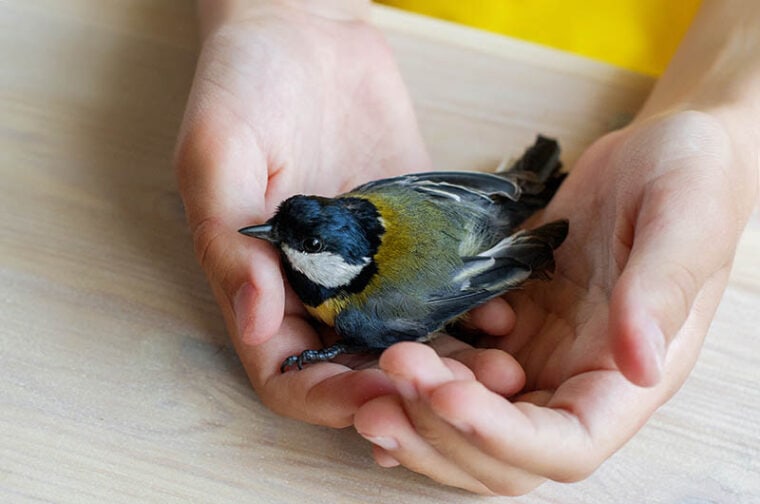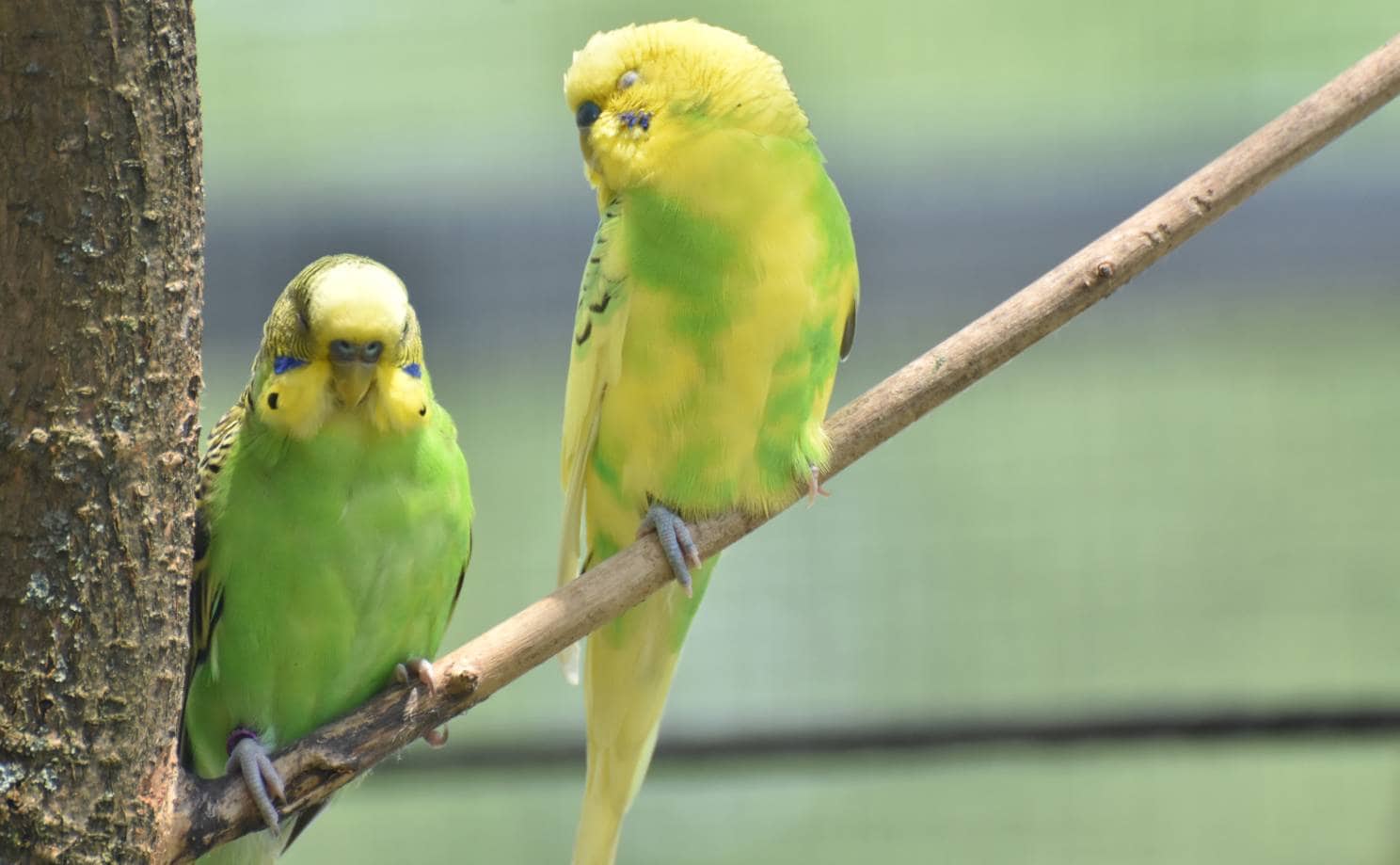
Cardiopulmonary Resuscitation (CPR) is a lifesaving technique that is useful in instances where an individual’s breathing or heartbeat has stopped. It is practiced not just on humans but on animals too. It is an important life skill that can be a lifesaver in an emergency.
Performing CPR on a bird might seem strange, and hopefully something you would never have to do. However, it is worth learning the steps to bird CPR as the procedure can save your bird’s life in an unfortunate scenario. In most cases, a pet bird would need CPR if they suddenly collapse due to an unfortunate event. Examples of such events include inadvertently chewing on an electrical wire and getting a shock, a heat stroke, or losing consciousness from smoke inhalation.
Naturally, the first thing to do if you ever see your pet bird passed out is to rush them to the vet. However, before taking your pet to the avian vet, you can attempt CPR to give them a better chance of survival. If someone nearby can assist you, have them drive and/or call the vet as you attempt CPR. Time management is one of the best ways to improve the outcomes of an emergency.
How to Perform CPR on a Bird
1. Look for signs of a heartbeat
Look and listen carefully for signs of a heartbeat and breathing. Put your ear close to the bird’s chest to hear the heartbeat, and observe its breast to see if it is gently rising and falling – a sign of breathing. Another way to check for breathing is by placing a compact mirror or glasses directly under your bird’s nares (nostrils) and observe for any signs of condensation on the lens/mirror.
2. Clear Blockage (if needed)
Open the bird’s beak to check for any blockages. If there’s a blockage, you try clearing it with your fingertip, a moist cotton swab, or a small, wet Q-tip. Be warned that if you use your finger, you might get bitten if your bird suddenly wakes up. This risk is greatest with parrots and rarely happens with songbirds. Do not attempt to force your finger into your bird’s mouth if it is too small for a comfortable fit.

3. Review If Assisted Breathing is Required
After removing any possible obstruction from the mouth, check for signs for breathing after doing so. If your bird isn’t breathing, but has a heartbeat, perform some rescue breaths.
To do this, begin by supporting your bird’s head and body. For large birds, you should support the head with one hand, the body with your other hand. For smaller birds, you can support their head and entire body using the same hand.
Next, tilt the bird slightly away from yourself. Turn your head a quarter to the right or left, and begin respirations. For small birds, seal your lips around the beak and nares (nostrils). For large birds, seal your lips around the beak only, and cover the nares (nostrils) with an index finger. Now, you are ready to perform rescue breaths.
Begin giving a rescue breath. Take a breath, then deliver five quick breaths through your bird’s beak. The “strength” of each breath is determined by your bird’s size. For small birds, use small puffs of air, and for larger birds you would need slightly stronger puffs.
Determining the strength of a rescue breath definitely takes some practice. However, a good indicator of your performance is looking for the rise of their sternum, or breastbone, for each short breath you deliver. The best place to visualize this is where the breastbone meets your bird’s stomach.
If their breastbone doesn’t rise with a rescue breath, it means you are either not getting enough air on, or there is an obstruction somewhere along your bird’s airways.
If the breastbone does rise with each short puff, deliver all five puffs and then momentarily observe your bird to see if it begins breathing on its own.
If your bird does not start breathing, give 2 more puffs and then reevaluate your bird. All the while, you should periodically observe and listen for a heartbeat as well. If your bird has a heartbeat, continue with the pattern of 2 puffs followed by observation until your bird either begins breathing on its own, or until you reach the vet.
4. Determine If You Need to Begin Chest Compressions
If your bird’s heartbeat stops while you’re delivering rescue breaths, or there is no heartbeat to begin with, you will have to administer chest compressions. This requires a free hand, so at this point, you would have to place a large bird down, while still supporting its head with one hand.
Depending on the size of your bird, place one to three fingers on your bird’s breastbone, or sternum.
For small birds, such as a budgie/budgerigar or a lovebird, 1 finger is usually enough. For a medium sized bird such as a cockatiel or rainbow lorikeet, you would need 2 fingers. For large birds such as a Scarlet or Hyacinth Macaw, African Grey, or a Cockatoo, you would need 3 fingers. You would need to administer 40 to 60 compressions to your bird per minute by pressing on their breastbone. Smaller birds have a higher heartrate need more compressions than larger birds. Therefore, a convenient system to remember is the fewer fingers you place on your bird’s sternum, the more compressions you would give per minute.
By depressing your bird’s breastbone, you will move blood through the underlying tissues, and hopefully their heart. This too has a slight learning curve, and you can adjust the pressure you apply as needed. Although you need to administer 40 – 60 compressions per minute, you should also not stop giving rescue breaths to your bird while you do so.
A good system to follow for a bird with no heartbeat is this:

5. Continue Assisted Breathing/Compressions
Keep up a consistent pattern of rescue breaths and ten compressions until your bird regains consciousness or you reach your vet. If your bird does recover at some point and is breathing on its own with a heartbeat, wrap them in a blanket or towel, and continue your trip to the vet.
What Do You Need to Be Mindful Of?
Pet birds are relatively frail and the biggest challenge while providing CPR to your bird is making sure you apply just enough pressure to stimulate their heart without causing injury to their sternum, keel, or ribs. This often comes with practice, but it is best to remember to not become overzealous with your compressions and following the finger guidelines to the best of your ability.
As mentioned earlier, if your bird starts breathing again on its own, place it in a warm, quiet environment, and take it to your vet for an examination.
It is VERY IMPORTANT to keep in mind that you should NEVER practice CPR or rescue breaths on your pet bird if he or she doesn’t need them! In other words, do NOT attempt them on your conscious, normal pet bird who is breathing on its own. Practice models can purchased online, or a plushie can serve as a great reference to practice on. Additionally, please do not attempt CPR or assisted breathing on any wild birds; simply report their location to your local area’s animal services. For the safety of everyone, cases involving wildlife are best left to the relevant authorities only.
Final Thoughts
CPR is a very useful technique that every pet owner should be mindful of and should strive to practice whenever possible. It’s one of the techniques we hope never to use, but it’s always best to know what to do just in case. The principles of CPR on a bird aren’t much different from resuscitating another pet or person, except the adjustments you’ll need to make to accommodate your pet bird’s size. Always remember to speak to your vet about CPR and other emergency resuscitation practices you should be mindful of for your pets.
See also: How to Do Cat CPR? (Step-By-Step Guide)
Featured Image Credit: Rodica Vasiliev, Shutterstock











